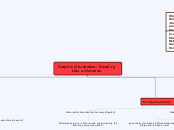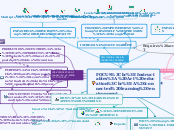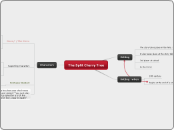Reading Like a Historian: Sourcing. (n.d.). Retrieved February 14, 2016, from https://www.teachingchannel.org/videos/reading-like-a-historian-sourcing
Reading Like a Historian: Contextualization. (n.d.). Retrieved February 14, 2016, from https://www.teachingchannel.org/videos/reading-like-a-historian-contextualization
(n.d.). Home | Stanford History Education Group. Reading Like A Historian | Stanford History Education Group. Retrieved February 14, 2016, from http://sheg.stanford.edu/rlh
References
Wineburg, Samuel S. (2001) Historical thinking and other unnatural acts :charting the future of teaching the past. Philadelphia : Temple University Press.
Graphic Illustration: Reading Like a Historian
Corroboration
How Does This Source Compare With Other Sources?
Does the information in the source conflict with other sources? Does the new source raise new questions about the validity of old sources or vice versa?
What new questions did you have after studying the new source?
How can those new questions be answered?
What new or previous sources can be used to answer new questions?
How does this source conflict with other sources?
Why do you think it conflicts with other sources? What evidence from the sources show that there is conflict?
Is this source providing similar information as other sources? Do the facts and details seem to align with other sources?
What details from this source show you that it is similar to other sources? What details from other sources shows you that it is similar to this source?
Contextualization
What Was Different Then and Now?
Does the source have the same meaning today as it did when it was created?
Why does it have that same meaning?
Does the source have a different meaning when interpreted in today's time?
Do phrases, locations and words have different meanings today then they did when the source was created?
How does that change the way you interpret the source?
When and Where Was the Document Created?
What was going on in that country or place during the time the source was written?
How does this affect how you interpret the source and the information contained in the source?
Sourcing
Who Created the Source?
When did they create the source in relationship to the event?
Is the source created several years after the event?
How would time affect the reliability of the source?
Is the source created during or soon after the event?
What type of a source is this? (Primary, Secondary)
How would this affect how the source is interpreted and trusted?
Is this source trustworthy or untrustworthy?
Is there a reason that this source would be biased?
What evidence lets you know that the source is untrustworthy?
What evidence lets you know that the source is trustworthy?
Why was the source written?
Was this source meant to be viewed by others or was it for personal use?
Was the source written for a specific purpose, such as for a specific event, or was the source written for pleasure?
How would this affect how you should interpret the source?
When and Where Was the Source Created?
Where (location) was the source written?
What date, time or year was it written?









